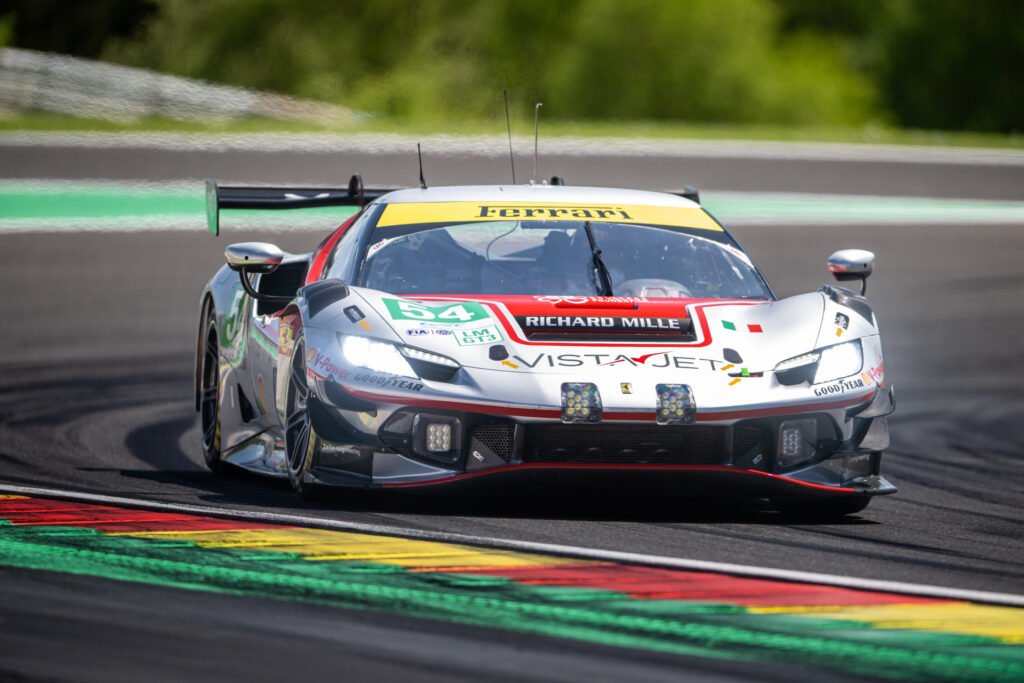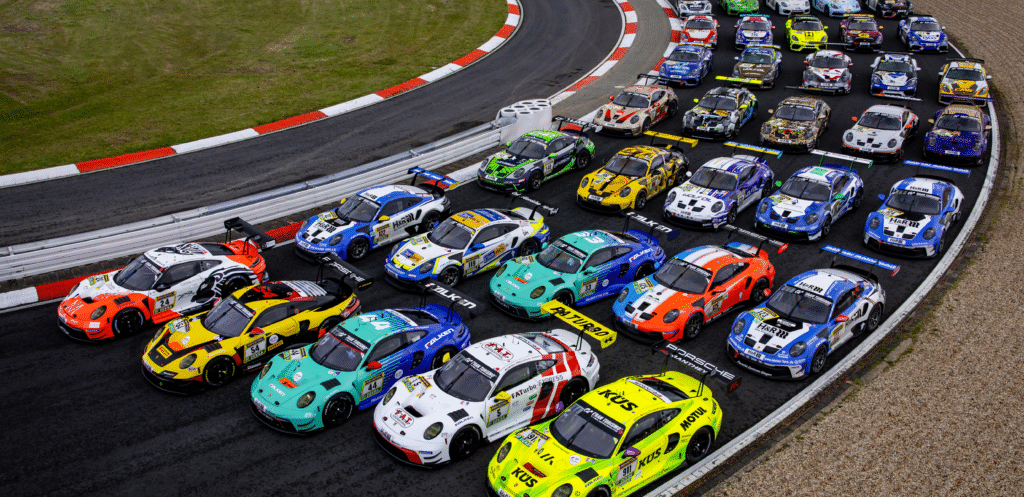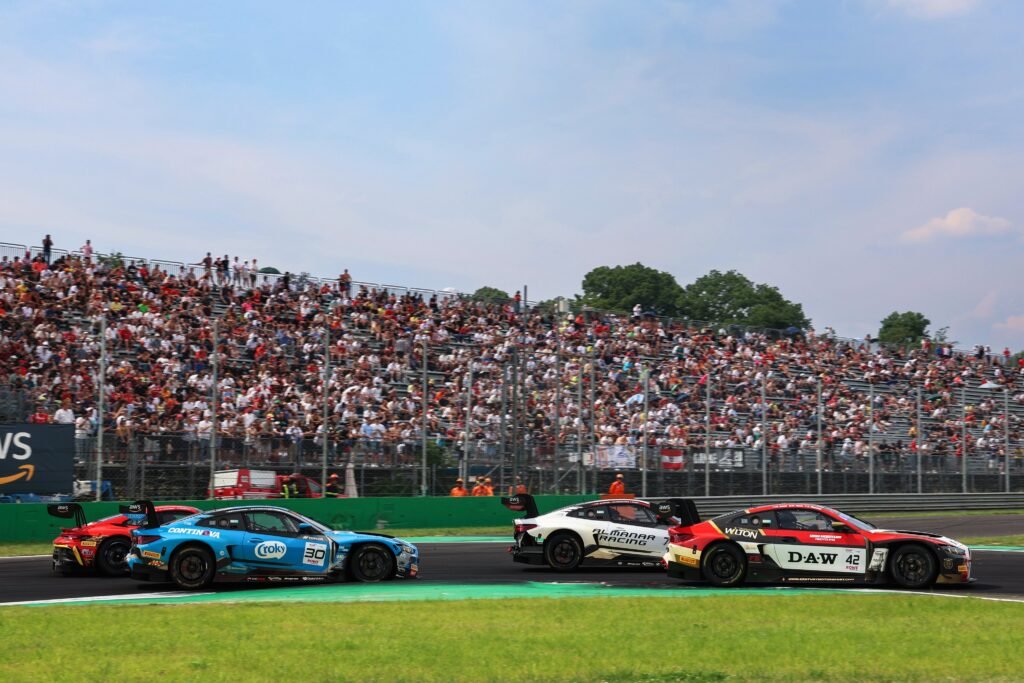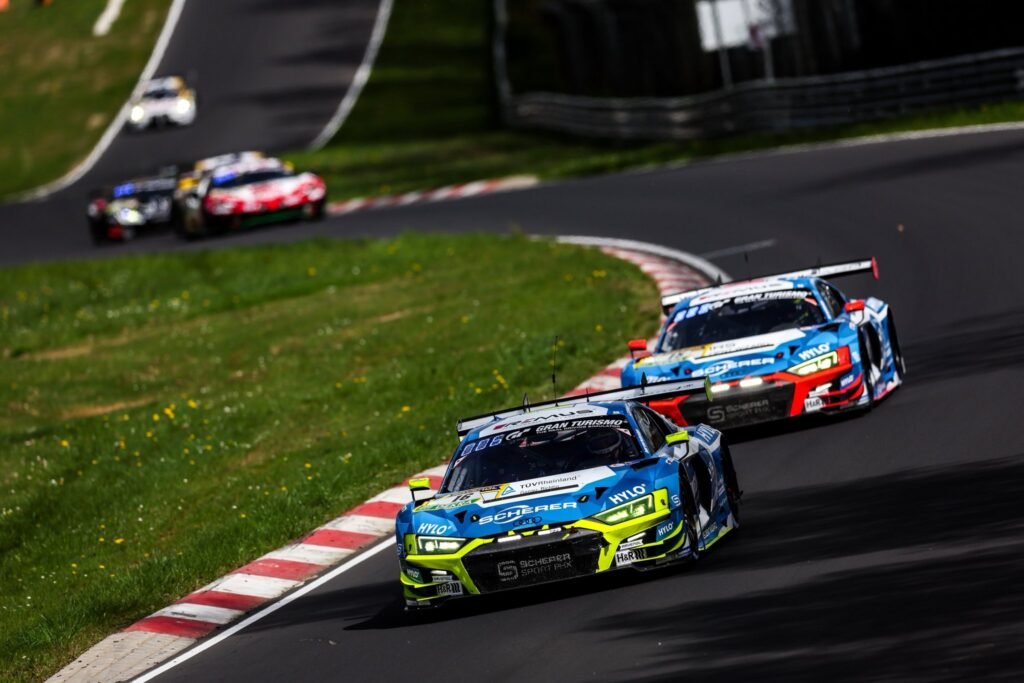Increasingly rich entry lists, old-school circuits, and a curiosity that renews itself every race weekend. Closed-wheel racing is experiencing a golden age that hasn’t been seen in years.
Everyone knows Formula 1 and its feeder series, even those who don’t usually follow motorsport. “The pinnacle of motorsport” has, over the past twenty years, overshadowed other categories thanks to thrilling battles, high-profile names, and above all, a winning communication strategy that brought the single-seater world championship to every screen. To put it simply, anyone who dreamed of becoming a driver dreamed of Formula 1. Yet, something is changing. In the last couple of years, a new trend has emerged – subtle but growing. Closed-wheel racing is starting to attract more and more fans, gaining traction in conversations, social media feeds, and weekend viewership, whether on TV or in grandstands. It’s no longer just for insiders or hardcore fans: GT racing is taking center stage once again and (perhaps finally) reaping the rewards of years of hard work.

Talking about GT3, endurance racing, or Balance of Performance to someone not immersed in motorsport was, and to some extent still is, like speaking a niche language, almost like an insider’s code. For years it was considered a “secondary” form of racing, less glamorous, less accessible, less broadcast. But at a certain point, interest in closed-wheel competitions started to grow, spurred on by evolving technical regulations, the entry of official manufacturers, and the arrival of high-profile drivers. Rather than remaining closed-off, this ecosystem has opened up and reinvented itself, sparking new curiosity around a world that had long remained in the shadows.
Where to start: GT4, GT Cup…
But let’s start with the basics: what are the first steps to getting started in closed-wheel racing? Unlike single-seaters, where the path is often linear and well-defined, GT competitions offer many different, diverse routes. The first step for many young drivers (as well as gentleman drivers) is through single-make championships, essentially training grounds organized directly by manufacturers. Series like the Ferrari Challenge, Lamborghini Super Trofeo, or Porsche Carrera Cup are excellent springboards. These are structured championships held at regional, national, or continental levels. Just think of Porsche’s range, from the Carrera Cup Italy to the more prestigious Supercup. Alongside these, there are categories like GT4 or GTCup, which provide another stage of development before stepping into GT3 racing.

It’s precisely here that stories begin, like that of Eliseo Donno. He made a name for himself in the Ferrari Challenge and the Italian GT Championship (a breeding ground for talent in recent years), eventually reaching the GT World Challenge Europe with the official AF Corse Ferrari team. A real example of how closed-wheel racing isn’t just an alternative path, but one that’s increasingly competitive and full of opportunity.
Between GT World Challenge and WEC
Once drivers gain experience in national series, the next step is the international stage. This is where the GT World Challenge, organized by SRO, comes in, with its regional branches (Europe, America, Asia, and Australia) and the crown jewel: the Endurance Cup. Its calendar features legendary races like the 24 Hours of Spa-Francorchamps. It’s a career-defining event that give factory and private teams the chance to compete in a context blending technology, strategy, and endurance. In the past year, the WEC has also carved out a major spot for GT3, making the format even more accessible for manufacturers and customer teams. It’s no coincidence that historic brands like McLaren or Lexus have seized the opportunity to return or bolster their presence in the global GT3 scene.
Valentino Rossi’s example
Since 2022, the GT world has seen a wave of new entries. One of the most talked-about debuts has undoubtedly been Valentino Rossi’s. After leaving MotoGP, the nine-time world champion chose to reinvent himself in GT racing – first with Audi, then with BMW – embracing a professional, long-term project. His arrival had a massive media impact: he brought in new viewers, packed grandstands across Europe, and shined a spotlight on the series. Many began watching the races just to see “the Doctor,” only to become fans of the format, the close battles, and the diversity of manufacturers. And in fact, even though the Tavullia-born driver now races only in the WEC and has said goodbye to the GT World Challenge Europe, the grandstands at Monza were still full of passionate fans.

This feels like a second youth for GT racing, something that’s becoming more and more fascinating to follow and study each day. What’s still somewhat lacking, at least in Italy, is proper media attention: a dedicated TV channel, more focused coverage. But one thing is certain: closed-wheel racing is no longer the “B-side” of motorsport. It’s becoming, in every respect, one of its most vibrant, spectacular, and authentic expressions.



